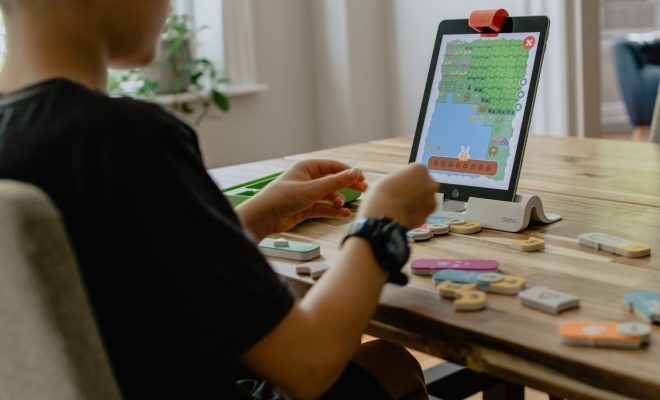Don’t Table the IPads Just Yet

When iPads first arrived in classrooms, learners and educators alike found themselves drawn to the visual beauty of the device. The apps inspired the imagination. Tech has come a long way from the first apps that attracted our attention. With thousands of available tools for classroom instruction, iPads engage learners in learning in ways that traditional methods cannot, especially when educators incorporate activities like anonymous polling and screencasting.
When educators include iPads in their instruction, they start to break down any real or imaginary barriers between teachers and their learners. The iPad is thin and hardly noticeable, the size of a standard sheet of paper or smaller. Because it’s lightweight and easily portable, the iPad is easy to carry for both learners and educators. iPads fit in many bags and briefcases and are easier to transport to group activities. iPads are unobtrusive digital companions.
Size, however, isn’t everything. iPads in the classroom streamline the educator’s job. Every educator recognizes the need to manage the vast accumulations of paper that can add up in a classroom. The iPad reduces over-reliance on paper.
Should you choose iPads as your preferred classroom digital device, you’ll still have to teach some basic iPad skills, such as:
- Organization: Your learners likely will be better at finding useful tools than you, and they’ll want to help in that respect. Screens full of seemingly random tools make finding tools difficult. Develop a tactic for app organization by designating the first screen for software that facilitates instruction, such as Word or Keynote. Designate another screen for “need occasionally tools” such as weather and maps. Give every app a landing page.
- Digital citizenship: iPads connect learners to the internet, but that doesn’t give learners carte blanche to do whatever they want when online.
- Offline engagement: iPads are useful tools, but you and your learners will need a break from them. Digital devices are only one of most tools in your instructional arsenal, and learners still need to develop their interpersonal communication skills. Put away the iPads for part of the day.
- You may be tempted to table the iPad, but don’t give in. Some iPad users find it frustrating that iPads don’t replicate the characteristics of a laptop. IPads aren’t supposed to. You cannot use a USB on your iPad, and you won’t be able to play DVDs.
Remember when Goldilocks exclaimed that she liked the chair, porridge, and bed that was just right? She would like iPads, too. IPads are the just-right choice in the tech world; they are neither too small nor too big.
Whether you use an iPad or other device, the tablet is more convenient in a classroom. It’s a useful au pair in the classroom when working on projects. It lends itself to digital conversations that smartphones can’t replicate because iPad keys are bigger and screens are easier to read and navigate.
IPads are still a preferred choice in most classrooms. Are they in yours?






